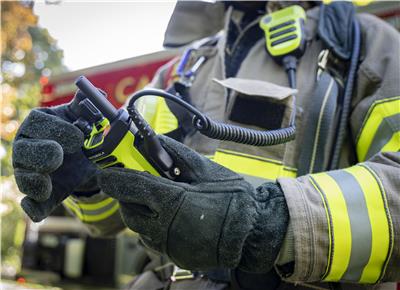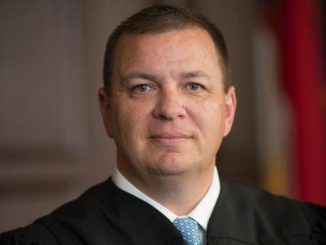
RALEIGH — To add to the list of worries in 2020, the National Fire Protection Association is warning Americans they face a greater risk of structural fires during the upcoming winter months, often resulting in increased rates of death and/or injury. The group reports seeing fires increase steadily between November-March, ending in up to 300 more injuries and 150 more deaths each month. Even more worrisome is the fact that North Carolina, like the rest of the country, is facing a dire shortage of volunteer firefighters.
The widespread volunteer shortage spreads across the entire U.S. with the National Volunteer Fire Council stating in 2019, “The volunteer firefighter numbers for 2016 and 2017 were the lowest recorded levels since the National Fire Protection Association began collecting data in 1983.” In an April 2019 article Governing magazine revealed, “The number of volunteer firefighters has declined from 300,000 in the 1970s to 38,000 in 2018, according to the Pennsylvania Fire and Emergency Services Institute.” Meanwhile, call volumes have tripled over the past 20 years and the current firefighter volunteer population is aging.
According to research by the Federal Emergency Management Agency (FEMA), 72 percent of North Carolina firefighters are volunteers, and that number is declining at around 11-12 percent annually. In response, The North Carolina Association of Fire Chiefs (NCAFC) and the International Association of Fire Chiefs (IAFC) are launching a two-year initiative designed to address the shortage in 15 at-risk fire department groups across 12 counties in the east, west and Piedmont regions of the state.
According to Chief Tracy Mosley, program manager for NCAFC who lives in Wilson and volunteers with the Silver Lake Volunteer Fire Dept, there are a number of factors behind the decades long decline. “It’s not just one thing; if we could find the one thing we could correct it,” he says. “For starters, people are working multiple jobs now so they don’t have time for it. Two, people are spending more time with their families and are busier with kids who travel for team sports and whatnot. Third, people don’t know they can volunteer to do this. People just assume firemen are all paid full time staff because it’s an expected, essential service. When people find out they can volunteer and actually be a firefighter….they are like wow! Sign me up! Fourth, it scares a lot of people to think about going into a burning building. But there are other things they can do.” Mosley cites a variety of ways people can help out such as answering phones, driving the trucks, and community education and outreach.
Lastly, Mosley says he thinks volunteer numbers are low because of the extensive training that is required in order to physically fight fires. “There are hundreds of hours of training required to be a volunteer fire fighter if you are trying to fight fires vs. answer phones.” In order to be certified to actually fight a fire a volunteer must complete a minimum of 300 plus hours of training, which usually takes 24-30 months to complete and after that volunteers must maintain a yearly minimum volunteer schedule of 36 hours.
Mosley says the level of commitment varies by department and that while some require people to respond to a minimum number of calls others are more laid back. “To be clear, there are expectations of our volunteers,” he says. “What we do is we explain what this job entails and ask them if they are willing to learn, have fun working with others, and follow certain protocols, and we ask them to ask themselves ‘am I a team player? This is a very social environment, but introverts can come in too. It’s about team work really.”
This is the second time the groups have initiated this push to increase volunteers and is part of the Volunteer Workforce Solutions program designed to help state fire departments achieve a viable and sustainable volunteer firefighter workforce. FEMA funds the program through a Staffing for Adequate Fire and Emergency Response (SAFER) grant with the goal of enhancing the recruitment and retention of volunteers. In 2018, the IAFC and NCAFC launched a similar recruitment campaign targeting 15 different North Carolina counties (with the exception of Wake County), than the ones chosen this year. That push resulted in a 168-percent success rate, thereby inspiring a second two-year campaign to increase volunteer recruits in additional counties.
Specifically, this year’s effort focuses on the following departments:
Bladen County: Elizabethtown Fire Department
Buncombe County: French Broad Volunteer Fire & Rescue and West Buncombe Volunteer Fire Department
Cherokee County: Hiwassee Dam Volunteer Fire Department
Duplin County: Chinquapin Volunteer Fire & Rescue
Forsyth County: Lewisville Fire Department and Rural Hall Fire Department
Franklin County: Youngsville Volunteer Fire Department
Harnett County: Harnett County Chiefs Association
Northampton County: Gaston Volunteer Fire Department
Pitt County: Town of Winterville Fire Department
Wake County: Wake County Fire Services
Wilson County: Silver Lake Volunteer Fire Department
Yadkin County: East Bend Volunteer Fire Department and Fall Creek Volunteer Fire Department
“Local volunteers provide the bedrock of North Carolina’s firefighter workforce,” says Chief Mosley. “We understand that the safety of our communities relies on fully staffed and trained departments, and based on the success of past campaigns, we’re eager to launch this next iteration to transform our state’s volunteer fire service landscape.”
In order to equip the local fire departments, the campaign is entailing targeted research and workshops. The fire departments will utilize geographic information systems (GIS) to provide in-depth views of their communities, measuring demographic, cultural and economic data to predict the best way to recruit a volunteer firefighter workforce. The GIS data offers insights such as what potential recruits do for fun, where they work and even the likely composition of their families. In addition, the campaign will offer several leadership workshops aimed at improving recruitment and retention to all departments statewide. Agencies across the country will share data and information learned in order to yield a greater impact on volunteer recruitment nationwide.
Chief Mosley says he hopes the campaign will raise awareness among the various communities about not only the need for more volunteers but also the myriad of ways folks can get involved. He says that oftentimes people assume they will be asked to go into burning buildings and are scared away but the opportunity. However, Mosley cites a number of other ways volunteers can help including answering phones, driving the trucks, and lending mechanical expertise to vehicles that need repairs. “One of the greatest ways you can keep your community safe is by volunteering with the fire department,” he says. “Men and women of all ages and life stages volunteer with our local fire departments, and we watch them build incredible camaraderie, gain new skills and make a tangible impact in the lives of their neighbors. Local departments need volunteers of all skill levels and abilities – from operational firefighters to administrative personnel – who are willing and able to respond to emergencies when needed. We welcome you to join our forces, give back to our community and be a part of a long-lasting legacy.”




